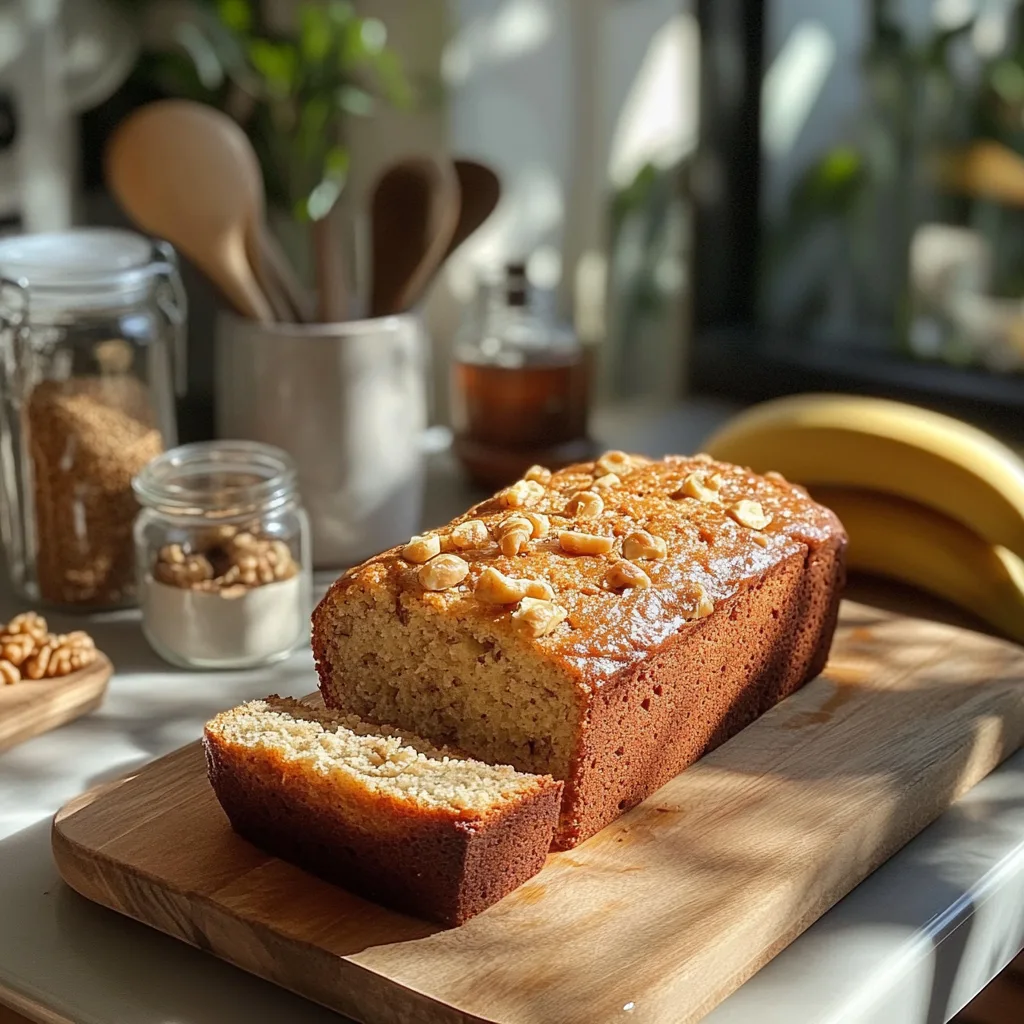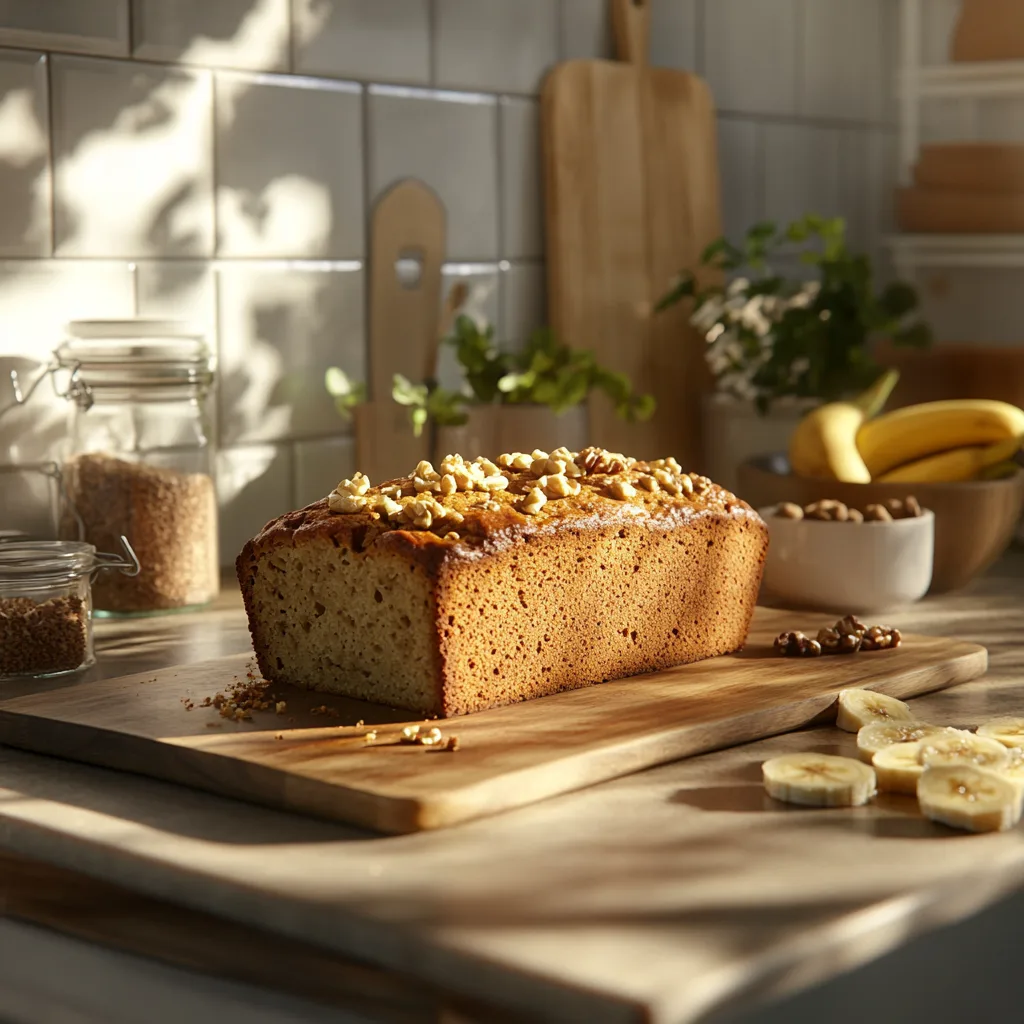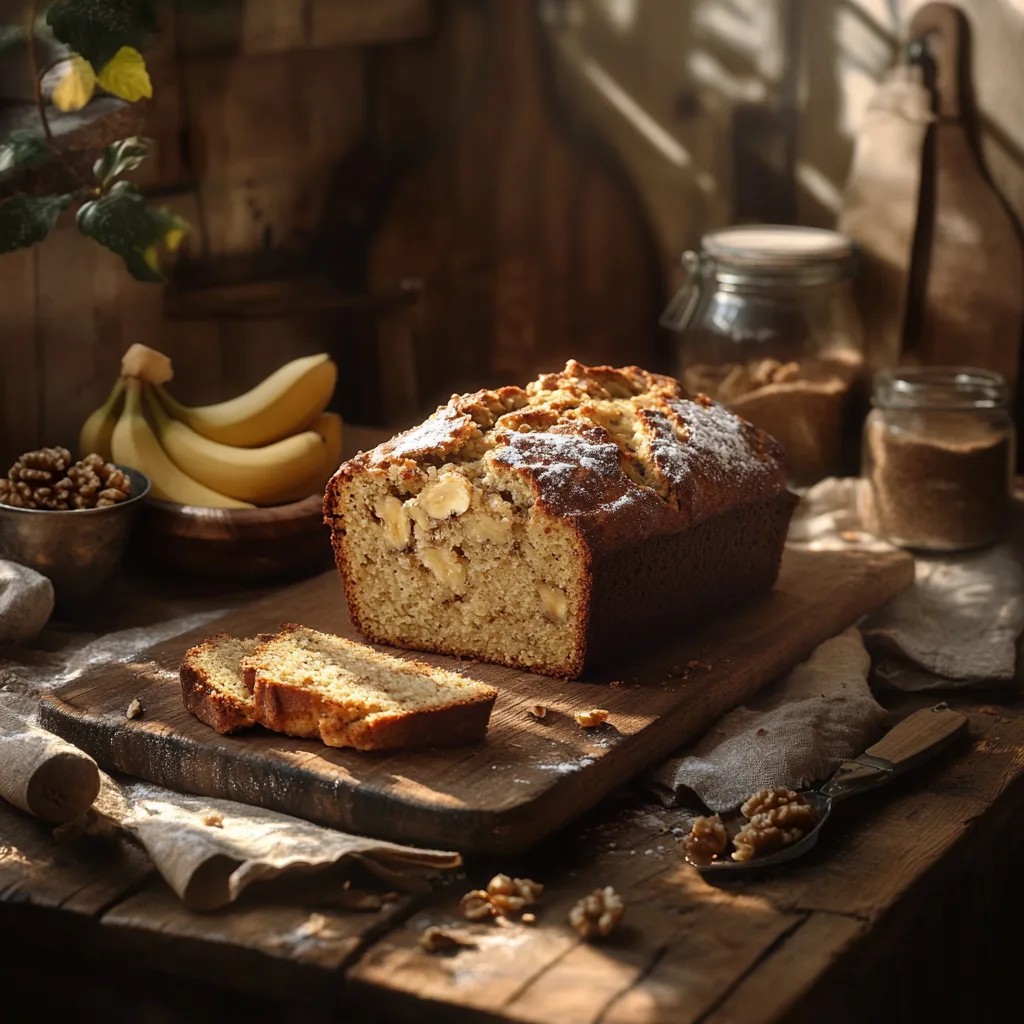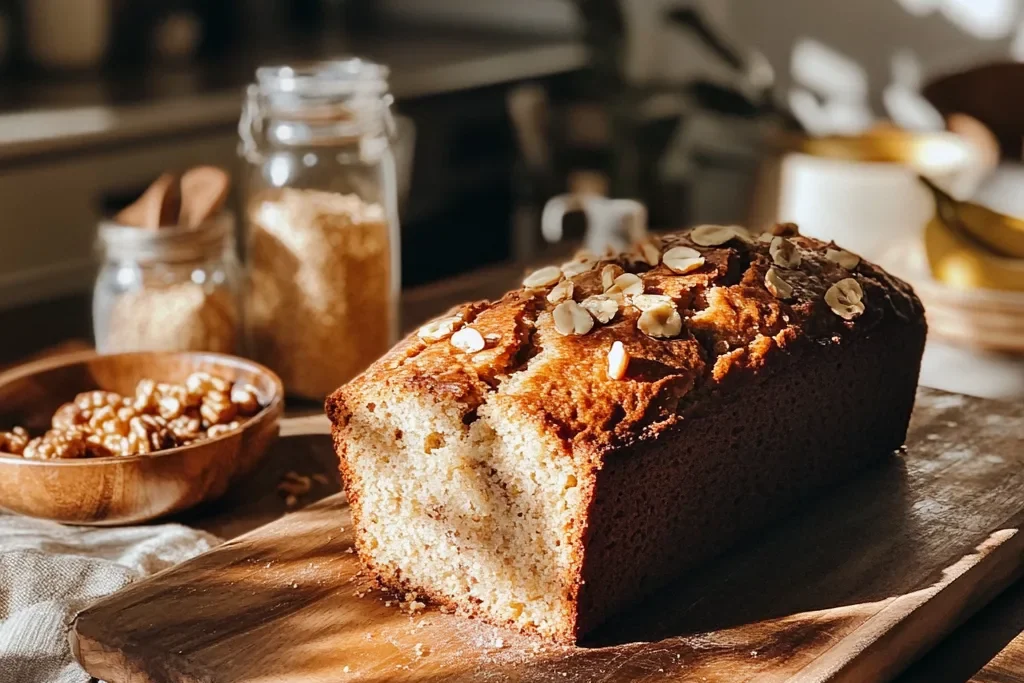Can I Substitute Oil for Bananas?
Ever found yourself halfway through a baking project and realized you’re out of oil? Don’t panic! Bananas are a fantastic substitute that can save the day. If you’re curious about other recipes, check out our Bread Recipe Using Oil or this quick Hotcake Mix Recipe. But before you swap that bottle of oil for a bunch of ripe bananas, let’s break down how and when this switch works best. And if you’re wondering about the great butter vs. oil debate, don’t miss our guide: Is Butter Better for Banana Bread? Here’s What You Need to Know.
Understanding the Role of Oil in Baking
Baking is basically a delicious science experiment, and oil is one of the main players in the mix. If you’ve ever wondered why your grandma’s cake was always so moist (ugh, I know, some people hate that word) or how those cookies stay chewy, the secret might just be the oil. Let’s break it down, slice by slice.
What Does Oil Do in Baking?
Think of oil as the peacemaker in your baked goods. It works behind the scenes to keep things moist, tender, and flavorful. Unlike butter, which can bring a lot of flavor but tends to solidify at room temperature, oil stays liquid. This helps give cakes that soft, melt-in-your-mouth texture we all love.
In a nutshell, oil:
Locks in moisture: This is key for cakes, muffins, and quick breads.
Adds richness: A little oil can make baked goods taste indulgent without being heavy.
Improves texture: Oil makes things tender. Think brownies that are fudgy instead of crumbly.
Types of Oil You Can Use for Baking
Not all oils are created equal. The type you choose can totally change the vibe of your recipe. Here’s the lowdown:
Vegetable Oil: The go-to for most recipes. It’s neutral, so it won’t mess with the flavor.
Canola Oil: Similar to vegetable oil but slightly lighter. Great for cakes and muffins.
Coconut Oil: This one brings a subtle tropical vibe (and it smells amazing). Make sure to melt it first if it’s solid.
Olive Oil: Best for savory breads or unique desserts like olive oil cake. Use extra light for a milder flavor.
Pro tip: Don’t use oils like sesame or peanut unless you’re aiming for their bold, distinct flavors. Nobody wants their banana bread tasting like stir-fry.
Why Oil Beats Butter (Sometimes)
Butter is awesome—don’t get me wrong—but oil has its strengths. If you’re baking something that needs to stay moist for days (like carrot cake or zucchini bread), oil is your BFF. Butter can dry out over time, while oil keeps things soft.
Also, oil makes recipes more forgiving. Accidentally bake your cake a little too long? Oil’s got your back, keeping it edible instead of turning it into a brick.

Table of Contents
The Science Behind Using Bananas as a Substitute
Bananas in baking? Yep, they’re not just for smoothies and afternoon snacks! If you’ve ever run out of eggs or oil mid-recipe, bananas might be your unexpected hero. Beyond being convenient, bananas bring their own flavor and texture to the table, making them a go-to swap for certain ingredients. Let’s break down how and why bananas work their magic.
Why Bananas Work as a Substitute
Bananas have some pretty unique properties that make them a superstar in baking:
Moisture Content: They’re packed with water, which helps keep baked goods soft and tender.
Natural Sugars: Ripe bananas are sweet, so they can cut down the need for added sugar.
Binding Power: Similar to eggs, mashed bananas help hold ingredients together.
Rich Texture: They add a creamy, dense quality that’s perfect for cakes, muffins, and even brownies.
Essentially, bananas act as a multitasker in the kitchen, pulling off the roles of eggs, butter, or oil in a pinch.
What Can You Replace with Bananas?
Here’s where bananas can shine as a stand-in:
Eggs: Replace one egg with 1/4 cup of mashed banana. This works best in recipes where a little banana flavor won’t clash—think banana bread, pancakes, or chocolate cake.
Butter or Oil: Use mashed banana as a 1:1 swap. For example, if your recipe calls for 1/2 cup of oil, use 1/2 cup of mashed banana instead.
Sugar (Partially): Since bananas are naturally sweet, you can reduce the sugar in some recipes. Cut about 1/4 of the sugar if you’re adding mashed bananas, but keep in mind this depends on the ripeness of your bananas.
The Science Behind Bananas as a Binder
Eggs are usually the “glue” in baking, holding everything together thanks to their proteins. Bananas, while not protein-packed, contain natural fibers like pectin and starch. These fibers create a similar binding effect, especially when combined with other ingredients.
Plus, bananas’ high potassium content can help with moisture retention, keeping your treats soft and not dry or crumbly.
When Bananas Are (and Aren’t) a Good Idea
Perfect for:
Muffins, pancakes, quick breads, brownies, and cookies.
Vegan or low-fat recipes that benefit from their creamy texture.
Recipes where a hint of banana flavor works well with the overall taste.
Not Ideal for:
Light and fluffy desserts like angel food cake. Bananas are dense, so they won’t give you that airy texture.
Recipes where you don’t want any banana taste—because, let’s face it, they’re sneaky and you’ll taste them.

Tips for Successful Substitution
Substituting ingredients in baking can feel like a science experiment (and honestly, it kind of is). Whether you’re out of eggs, butter, or flour, knowing how to make swaps without sabotaging your recipe is a skill worth mastering. Here are some practical tips to help you pull it off like a pro—because nobody wants sad, dense cookies or a cake that crumbles at the wrong time.
- Understand the Role of the Original Ingredient
Before swapping, ask yourself: What is this ingredient doing in the recipe?
Eggs: Bind ingredients, provide structure, and add moisture.
Butter or Oil: Add richness, moisture, and flavor.
Flour: Provides structure and bulk.
Sugar: Sweetens and helps with browning.
Knowing the “job” of an ingredient will help you pick the right substitute. For example, bananas can replace eggs, but they also add sweetness, which might mean adjusting the sugar.
- Match the Texture and Function
The best substitutes closely mimic the texture or function of the ingredient you’re replacing. Here’s a quick cheat sheet:
Eggs: Try mashed bananas, applesauce, or flaxseed mixed with water.
Butter: Use coconut oil, mashed avocado, or plant-based margarine.
Milk: Swap with almond milk, oat milk, or coconut milk (stick to unsweetened for savory recipes).
Sugar: Use honey, maple syrup, or coconut sugar, but reduce liquids if your substitute is in liquid form.
- Test in Small Batches First
If you’re experimenting with a new substitution, don’t bake a double batch on your first try. Stick to smaller quantities until you’re confident in how the swap will work. - Adjust for Moisture Levels
Some substitutes, like mashed fruit or yogurt, add extra moisture to the batter. This can throw off the texture of baked goods if you don’t adjust. To fix this:
Add an extra tablespoon of flour if the batter feels too wet.
Reduce other liquid ingredients slightly to balance things out.
- Stick to Similar Flavors
Not all substitutes are flavor-neutral. For example:
Bananas add sweetness and a distinct flavor.
Coconut oil or milk brings a tropical vibe.
Olive oil can taste savory, so it’s better for bread than cake.
If the flavor of your substitute clashes with your recipe, it’s a no-go.
- Don’t Overdo It
Substitutes work best when you replace one or two ingredients, not the whole recipe. Too many swaps can completely change the chemistry and lead to unexpected results (and not in a good way). - Add Leavening if Needed
Some substitutions, like replacing eggs with bananas or applesauce, might make your batter heavier. A pinch of extra baking soda or powder can help give your baked goods a boost. - Take Baking Time into Account
Substitutes can affect how quickly or evenly your recipe bakes. For example:
Recipes with liquid sweeteners like honey or maple syrup may brown faster.
Denser batters (from things like mashed bananas) might take longer to cook through.
Check your baked goods a little earlier than the recipe suggests and adjust as needed.
- Use Reliable Ratios
For common substitutions, stick to tried-and-true ratios to avoid disasters. For example:
1 egg = 1/4 cup mashed banana or unsweetened applesauce.
1 cup butter = 1 cup coconut oil or 1/2 cup mashed avocado + 1/2 cup oil.
1 cup sugar = 3/4 cup honey or maple syrup (reduce liquid by 1/4 cup).
- Expect Slight Differences
Even the best substitutions might change the flavor, texture, or appearance slightly. That’s okay! Embrace the uniqueness of your creation. If you want an exact replica of the original, it’s better to stick with the classic ingredients.

The Correct Ratio: Bananas vs. Oil
Swapping bananas for oil in baking is not only healthier but also super easy—if you get the ratio right. Using the wrong amount can lead to overly dense or gummy treats, so let’s talk about how to nail this substitution every time.
The Golden Ratio
The general rule for replacing oil with bananas in baking is:
1/2 cup mashed banana = 1/2 cup oil
That’s a 1:1 substitution. Super straightforward, right? However, there are a few things to keep in mind to get the best results.
How to Measure Mashed Bananas
Before you start swapping, it’s important to measure bananas correctly.
Choose Ripe Bananas: The riper, the better! Spotted or even brown bananas are sweeter and easier to mash.
Mash Thoroughly: Use a fork or a potato masher to get a smooth texture. Chunky bananas can throw off measurements.
Spoon into a Measuring Cup: Don’t pack it down—lightly spoon the mashed banana into a dry measuring cup, then level it off with a knife.
Adjusting the Ratio for Best Results
While the 1:1 ratio works well in most recipes, you may need to tweak it based on the type of baked good:
For Moist and Dense Recipes
Think banana bread, brownies, or muffins.
Stick with the full 1:1 ratio (1/2 cup banana for 1/2 cup oil).
The extra moisture from bananas enhances these types of treats.
For Light and Fluffy Recipes
Think cakes or cupcakes.
Use slightly less banana—try 3/4 cup banana for every 1 cup of oil.
Add 1–2 tablespoons of water or milk to help lighten the texture.
How Bananas Affect Baking Chemistry
Bananas don’t just replace the oil; they also add natural sugars and fiber. Here’s how that impacts your recipe:
Sweetness Boost: Bananas add sweetness, so you can cut 1–2 tablespoons of sugar from your recipe.
Dense Texture: Bananas are heavier than oil, so your baked goods may turn out a bit denser. Adding an extra pinch of baking powder or soda can help counteract this.
Distinct Flavor: Bananas bring their own flavor, which works best in recipes like chocolate, nut-based, or spiced desserts.
Pro Tips for Perfect Banana Substitutions
Start Small: If you’re new to this swap, try substituting only half the oil with bananas to see how it affects the recipe. For example, replace 1/4 cup oil with 1/4 cup banana in a recipe calling for 1/2 cup oil.
Combine with Other Fats: If you’re worried about losing the richness oil provides, use half banana and half oil for the best of both worlds.
Taste as You Go: Bananas can dominate the flavor, so balance them with spices like cinnamon or vanilla.
Examples of Substitution
Here’s how the banana-to-oil ratio works in common recipes:
Brownies: Replace 1/2 cup of oil with 1/2 cup mashed banana for fudgy, rich brownies.
Pancakes: Swap 1/4 cup of oil with 1/4 cup banana for fluffy, naturally sweet pancakes.
Cakes: Use 1 cup mashed banana to replace 1 cup oil, but add an extra tablespoon of water or milk for a lighter texture.
FAQs About Substituting Oil with Bananas
What’s the Right Ratio for Replacing Oil with Bananas?
Use a 1:1 ratio: 1/2 cup mashed banana = 1/2 cup oil. For lighter textures, use slightly less banana (3/4 cup per 1 cup oil) and add a splash of liquid.
Will Bananas Change the Flavor?
Yes, bananas add a mild fruity taste. They work best in recipes like muffins, brownies, and chocolate cake, where the flavor complements the dish.
Can I Use Frozen Bananas?
Yes! Thaw them completely, drain excess liquid, and mash before using.
Are Bananas Healthier Than Oil?
Definitely! Bananas are lower in calories, contain no fat, and are packed with nutrients like potassium and fiber.

